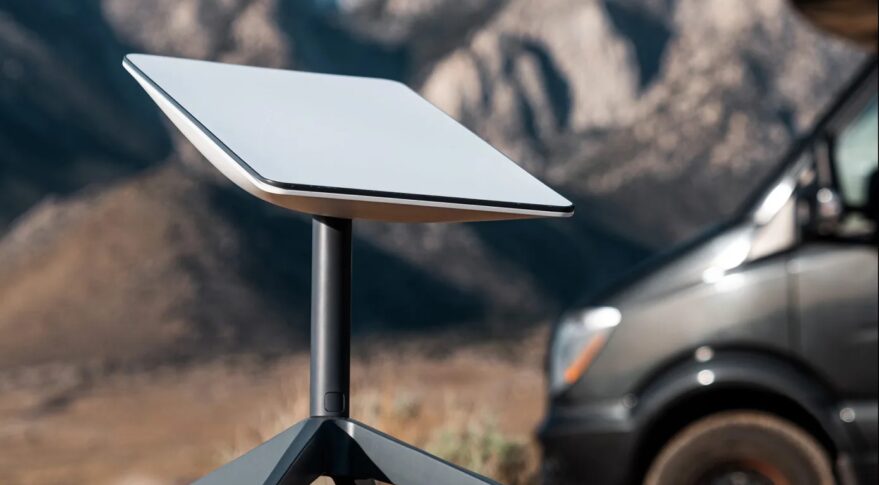
TAMPA, Fla. — SpaceX warned June 21 that its Starlink broadband network would become unusable for most Americans if a proposal to use the 12 GHz band for terrestrial 5G is approved.
U.S.-based satellite broadcaster Dish Network is seeking permission to operate a high-power mobile service in the 12 GHz band, which is part of the Ku-band spectrum that Starlink, OneWeb and other satellite operators use to connect with user terminals.
In a letter to the Federal Communications Commission, SpaceX said tests it conducted in Las Vegas shows how the proposed network would cause Starlink users to “experience harmful interference” more than 77% of the time.
Starlink would be “subjected to total outage of service 74% of the time,” wrote David Goldman, SpaceX senior director of satellite policy.
“This analysis verifies what should be intuitive—that a high-power terrestrial network would blow out anyone using the high-sensitivity equipment satellite consumers must use to receive signals that comply with Commission and international power restrictions on satellite downlink transmissions,” he said.
“As a result, vastly fewer Americans could be connected using next-generation satellite services, and those that remain would experience degraded service and regular network outages.”
He said SpaceX’s analysis highlights inaccuracies and “egregious assumptions” in earlier interference studies commissioned by RS Access, a holding company that, like Dish Network, has licenses in the 12 GHz band that it wants to upgrade for a 5G network in the United States.
One study for RS Access estimated a nationwide 5G network would cause interference to less than 1% of terminals used by non-geostationary satellite operators, and also detailed solutions that would mitigate the impact.
However, Goldman said this analysis is “untethered from reality,” and fails to address factors including how satellite operators share their spectrum through coordination arrangements.
“In fact, SpaceX recently announced that it reached a coordination agreement with OneWeb, but historic accomplishments like this require the flexibility that comes only with full access to this shared band,” he wrote in the letter to the FCC.
He said RS Access’ analysis also assumes its terrestrial network would only cover dense urban areas, and that it would be geographically separated from satellite operators that would remain in almost entirely rural areas.
That would require Starlink to essentially forgo “often unserved or underserved users” in these urban areas.
According to SpaceX’s study, harmful interference from a high-power mobile service in the 12 GHz band would extend more than 13 miles from the macro base station in unobstructed conditions.
SpaceX urged the FCC to reject Dish Network’s 12 GHz proposal, and to investigate whether earlier technical studies submitted to the regulator were intentionally misleading.
Dish Network spokesperson Meredith Diers said the company’s “expert engineers are evaluating SpaceX’s claims in the filing.” RS Access did not respond to a request for comment.
The letter is the latest exchange in a bitter regulatory feud between SpaceX and Dish Network that has been taking place in FCC filings for years.
In a June 13 letter to the FCC, Dish Network counsel Pantelis Michalopoulos called on the regulator to force SpaceX to deactivate Starlink customers that have installed antennas on moving boats and cars, because the company does not yet have permission to operate mobility services.
Goldman told the FCC in SpaceX’s June 21 letter that regulatory “attacks” from Dish Network have “delayed new services, such as mobile connection, badly needed by otherwise unserved Americans.”
Dish Network has amassed frequencies in other spectrum bands for its 5G plans. The company said June 15 it has commercially launched 5G services in more than 100 cities across the United States, covering around 20% of the U.S. population.
Most of Starlink’s current availability in the United States is concentrated west of the Mississippi River and is not confined to cities, according to its availability map. The remaining areas are set to become available in 2023 for new users once SpaceX adds more satellites to the Starlink constellation to increase capacity.
The final paragraph of this article was edited June 21 to correct a description of Starlink’s availability map, which shows where the service is available and not where it has coverage.
